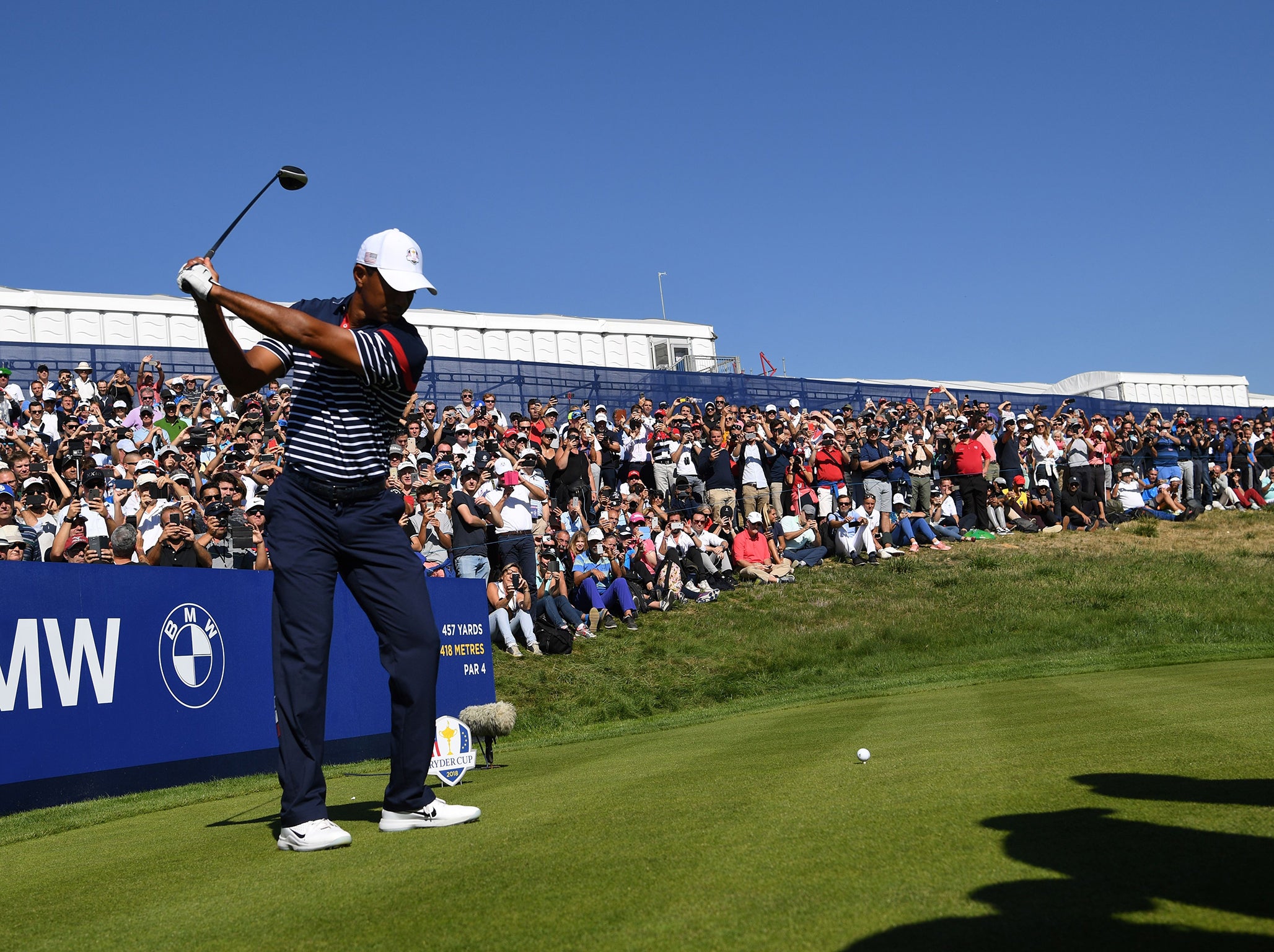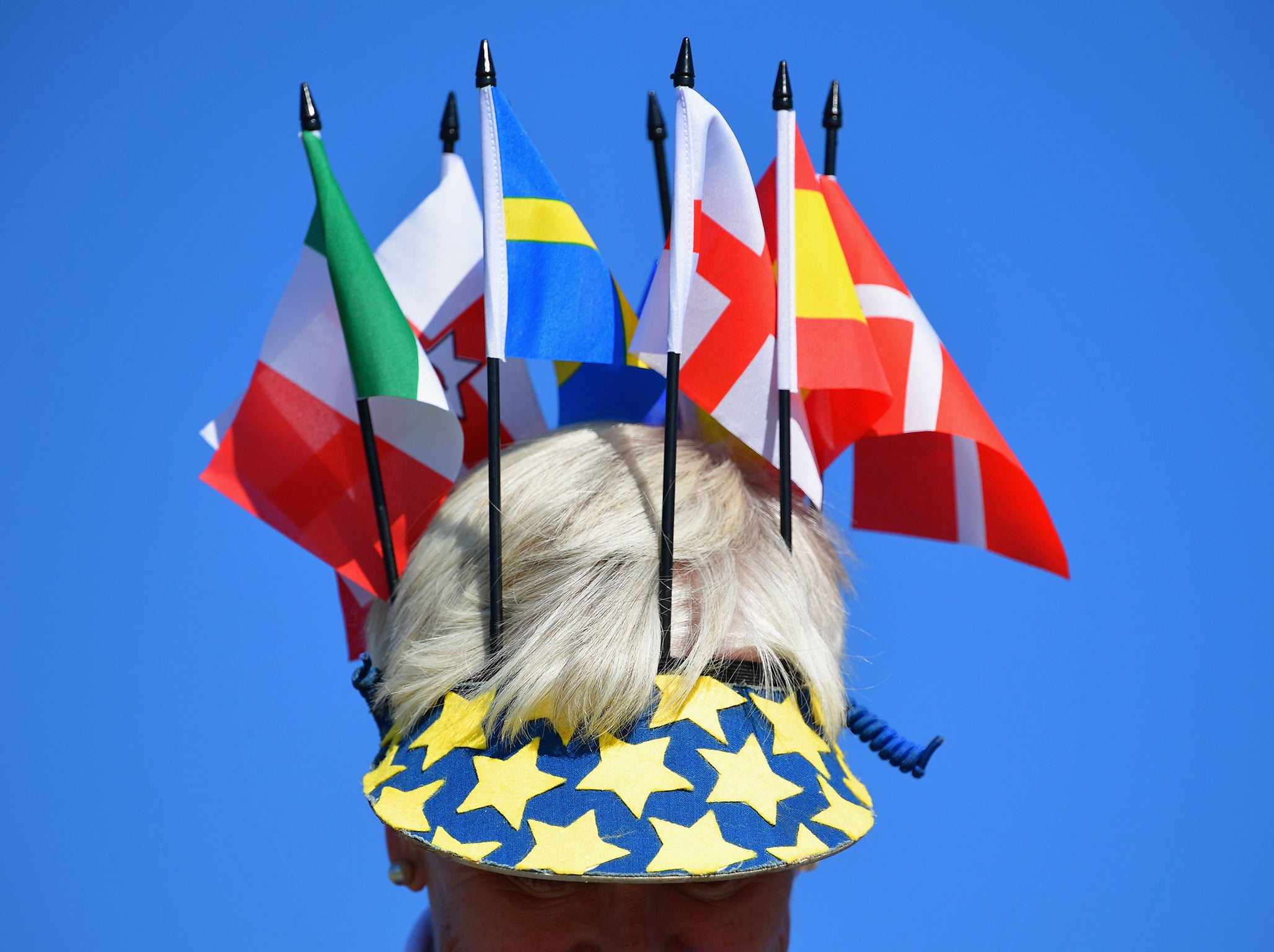Welcome to the Ryder Cup 2018, the ultimate test of golfing nerve with an irresistible allure
The Ryder Cup's allure transcends the personal boundaries of a fiercely individual sport, writes Jonathan Liew, a pro bono undertaking in a game where success has traditionally been measured in dollars and cents

Your support helps us to tell the story
From reproductive rights to climate change to Big Tech, The Independent is on the ground when the story is developing. Whether it's investigating the financials of Elon Musk's pro-Trump PAC or producing our latest documentary, 'The A Word', which shines a light on the American women fighting for reproductive rights, we know how important it is to parse out the facts from the messaging.
At such a critical moment in US history, we need reporters on the ground. Your donation allows us to keep sending journalists to speak to both sides of the story.
The Independent is trusted by Americans across the entire political spectrum. And unlike many other quality news outlets, we choose not to lock Americans out of our reporting and analysis with paywalls. We believe quality journalism should be available to everyone, paid for by those who can afford it.
Your support makes all the difference.It’s the first morning of the 1993 Ryder Cup, and in the USA team room Davis Love III and Tom Kite are nervously pacing the floor waiting for their foursomes match to be called. Fred Couples is with them, and as he absent-mindedly picks a 9-iron out of Love’s bag and starts waggling it around, the head falls off. This was an era before the vast entourages and support networks that characterise the modern Ryder Cup, and so as an integral part of Love’s 9-iron clatters down the steps of the Belfry clubhouse, Team USA are thrown into instant panic.
With just five minutes before Love and Kite are due on the tee, a junior member of the US team is forced to sprint out onto the course in search of some epoxy to put the club back together again. Ultimately, some adhesive is located, the head reattached and Love and Kite go out and win their match. But somehow, it’s one of those stories that already seems to belong to a different age, a tale you can scarcely imagine unfolding today, when every possible circumstance has been anticipated, every step mapped out in infinitesimal detail, every whim catered for by an entire army of strategists and backroom staff, right down to the colour of the tee pegs and the inspirational quotes on the locker room wall.
And so, just a generation on, here we are: in our little made-for-television Arcadia on the Paris outskirts, waiting for a sporting event often described - admittedly on the flimsiest of bases - as the world’s third biggest after the World Cup and the Olympics. We can quibble about that all night, but one thing is for certain: at 8am on Friday, when a packed grandstand of 6,500 will roar Europe and America onto the first tee to bring up the curtain on three days of the highest drama, it will certainly feel like it.
Woven into those three days and 28 matches will be all sorts of intriguing subplots and broader questions that go well beyond whether the United States can capture their first Ryder Cup on foreign soil in a quarter of a century. Will Europe’s unfancied underdogs be able to make a dent in a US team containing nine major winners? Will Tiger Woods finally seize the moment? Which Rory McIlroy will show up? How will the crowds behave? And for that matter, what on earth are we doing in France in the first place?
The last of these is perhaps the easiest to answer. When France won the bid seven years ago, beating off half-hearted competition from Germany, Holland, Spain and Portugal, it was on the basis of that word beloved of all sporting administrators: “legacy”, or as bid chief Pascal Grizot put it, dispelling “the stupid preconception that golf here is elitist”.
A certain doublethink was at work here. The fact that golf in France has traditionally been the preserve of the rich and Anglophone meant there were no financial qualms over staging the tournament. Equally, however, the head of the French bid Pascal Grizot was able to sell the European Tour a vision of broadening the reach of the game, a golfing explosion in a country where the terms “un par”, “un bunker” and “un driver” are likely to elicit a quizzical response.
Will it work? Probably not. Ideas of “growing a sport” should generally be taken with a pinch of salt: we are stubborn creatures of habit, and these habits are only shifted over generations, not a weekend. But Grizot can point to concrete evidence that the strategy is already bearing fruit: since winning the bid, 100 new short-form golf courses have been built in the country, and almost half of the tickets have been sold to the domestic market, which means that we are at least on course to surpass the roughly 200 French fans who turned up at Gleneagles four years ago.
But on a broader level, it’s hard to make the case stick. “Football is king for another four years,” announced Jean van de Velde - perhaps France’s most famous ever golfer - after Didier Deschamps’ team won the World Cup in July, and with an Olympic Games in Paris in 2024, golf remains a whisper in a room of screams. It ranks around seventh in the country’s hierarchy of sports, just between judo and petanque.
Throw in the fact that the Ryder Cup is only shown on pay-TV, and that for the first time in the 91-year history of the competition there is no representative from the host country, and we could, frankly, be anywhere. The vast hospitality marquees, English-language signs and hot dog stalls could have been transplanted wholesale from Wisconsin or Wentworth. In an era of La Liga games being staged in the USA, and NFL games coming to Wembley, the Ryder Cup is just another example of flat-pack sport, a travelling circus that rolls in on Monday and rolls out again on Sunday, leaving only pleasant memories and several thousand tonnes of landfill waste in its wake.

Then again, perhaps that’s part of the point. The Ryder Cup has always conveniently morphed to suit its environment, and it’s one of the curiosities of sport that the only real representation of the European ideal at a team level is in a game that, politically speaking, leans decidedly to the right. Not to mention the fact that most of the Europeans live in Florida these days.
Even so, the bond that has generated an unprecedented era of European dominance over the last two decades is more than artificial: a shared and yet confederate identity perhaps best expressed by the current captain Thomas Bjorn. “The identity of Europe in the Ryder Cup comes from the team,” he said. “Different countries coming together as Europe. It’s such a small continent compared to the others, but together we have so much history and so many great things going for us. It means a lot more to us as golfers because we grow up with the European Tour. It is part of the life we live. It has a meaning.”
Winning a Ryder Cup feels like nothing else. Losing one feels like staring into the abyss
It has an irresistible allure, too, one that transcends the personal boundaries of what has always been a fiercely individual sport, a pro bono undertaking in a game where success has traditionally been measured in dollars and cents. It was the lure of playing in one more Ryder Cup that persuaded Paul Casey to retake his European Tour card in an attempt to qualify for his first team in a decade. For veterans like McIlroy, Ian Poulter and Sergio Garcia, it is part of their identity, as much as any of their individual accolades. For Europe’s five rookies - Tommy Fleetwood, Thorbjorn Olesen, Alex Noren, Jon Rahm and Tyrrell Hatton - it’s an experience that will shape them, deeply and irrevocably.
Winning a Ryder Cup feels like nothing else. Losing one feels like staring into the abyss. And on the eve of competition, the USA are justifiably firm favourites to retain the Cup for the first time since 1993. Even Casey was forced to admit that the US are “better than us on paper”. That’s been the case many times in the past, of course. But where America have so frequently been less than the sum of their parts, the gulf in cohesion has been expertly bridged since the trouncing at Gleneagles in 2014. There are vanishingly few cracks in this American team, and precious few weaknesses either.

Home advantage will count for something, at least. The bombers will need to rein themselves in: Justin Thomas describes Le Golf National as a “second-shot course”, one where accuracy off the tee will be at a high premium. Some of the really nasty rough that was present at the French Open in July has been cut back, but with many of the greens well protected by sand and water, there will be fewer of the miracle scrambles and birdie barrages we saw at Hazeltine two years ago.
Then again, this is an American team for all conditions. And in any case, technical details will only get you so far. More than any competition in the sport, this will be a battle of the mind. From the raucous noise of the first tee to the unbearable tension of the match-halving putt on the 18th green, Ryder Cups are a test of sinew and resolve. Where every drive will be watched and dissected by millions, where every shot feels freighted with the weight of a continent.
For the Americans, in particular, the galleries will provide their own unique challenge. Does it feel different standing over a six-foot putt when you know a miss will be roared by thousands? Does that one guy behind the rope with the snide insult have the potential to throw you off your game? Only the next three days will tell us for sure. A lot has changed in the Ryder Cup in a quarter of a century. But as the ultimate test of golfing nerve, some things have remained resolutely the same.
Join our commenting forum
Join thought-provoking conversations, follow other Independent readers and see their replies
Comments